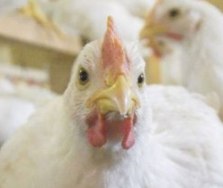Effect protein concentrates on subclinical necrotic enteritis

Researchers at Harper Adams University College in the UK studied the effect of dietary protein concentrates on the incidence of subclinical necrotic enteritis and growth performance of broiler chickens.
An experiment was conducted to quantify the effects of three nutritionally complete (similar protein and energy) corn-based diets that contained different dietary protein concentrates (potato-CP 76%, fish-CP 66%, or a mixture of soy proteins, soybean meal-CP 48%, and full-fat soy-CP 36%) on the incidence of spontaneously occurring subclinical necrotic enteritis (NE) in broiler chickens.
A total of 1,260 birds were placed into 18 solid floor pens (70 birds per pen) and fed 1 of the 3 experimental diets from 15 to 31 d of age. The weight gains and feed intakes of the birds fed the potato- and fish-based diets were lower (P < 0.001) than those of the birds fed the soy-based diets. Weight gain:feed intake ratio and mortality rate were not affected (P > 0.05) by dietary treatment The birds fed the potato-based diets had a higher incidence of necrotic lesions in the duodenum (P < 0.001) and proximal jejunum (P < 0.01) than those fed the soy-based diets.
The chickens fed the potato-based diet had a higher (P < 0.001) proportion of moderate to severe duodenal and distal ileal hemorrhages and liver lesions than the birds fed the soy-based diet. There was also a higher (P < 0.05) level of serum antibodies for Clostridium perfringens alpha toxin in birds fed the potato-based diet compared with the other 2 diets. The birds fed the fish-based diet had a similar (P > 0.05) incidence of subclinical NE in comparison to the birds fed the soy-based diet, although there was a higher incidence of intestinal hemorrhagic lesions.
The differences in incidence of subclinical NE were not consistent with the relatively small differences in amino acid content between the diets or in the contents of nonstarch polysaccharides. However, the potato protein-based diet had higher trypsin inhibitor activity and a lower lipid content that could have contributed to the increased incidence of subclinical NE.
This paper has been published in Poult Science 2010 Jan;89(1):34-43.













